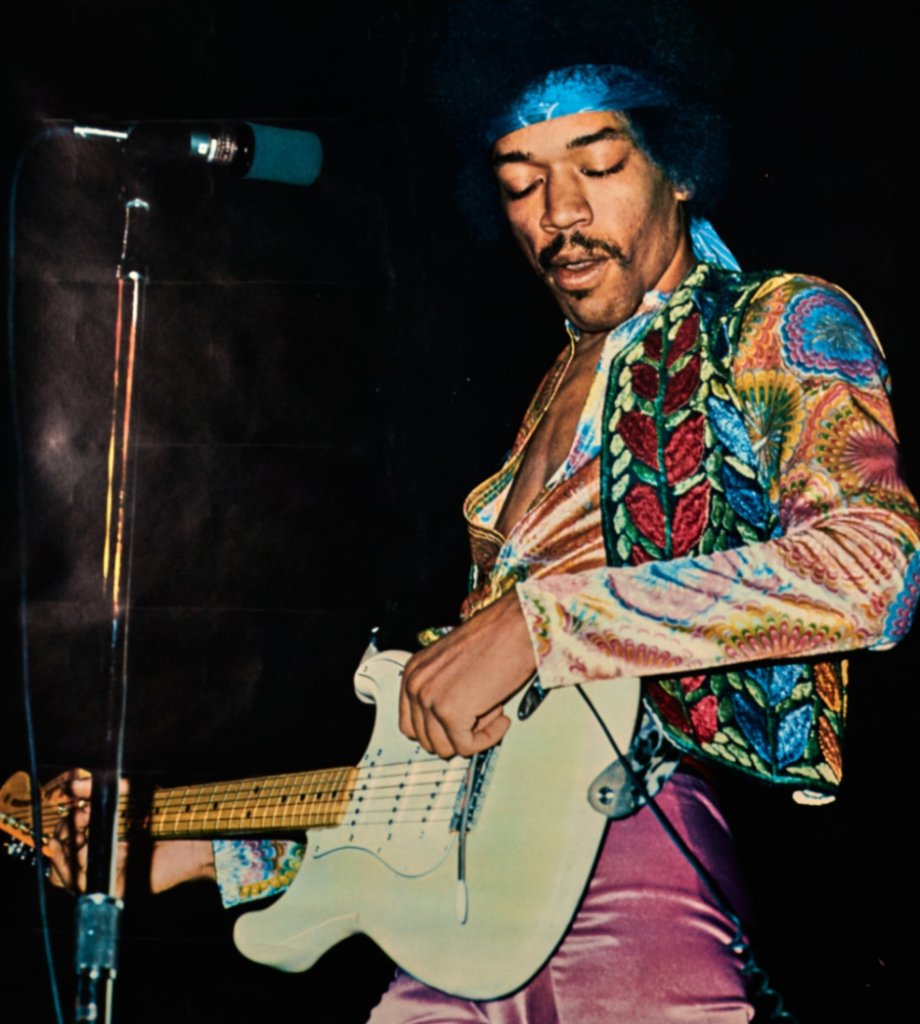Playing Jimi Hendrix on the Guitar: A Journey Through His Iconic Style
Jimi Hendrix remains one of the most influential guitarists in the history of rock music. Known for his innovative techniques, soulful expression, and electrifying performances, Hendrix redefined the possibilities of the electric guitar. Aspiring guitarists often seek to emulate his style, but playing Jimi Hendrix on the guitar requires more than just technical skill—it demands an understanding of his musical approach and creative spirit. This article explores the key elements of Hendrix’s guitar style and offers insights on how to incorporate these techniques into your own playing, whether you’re taking Jimi Hendrix guitar lessons or practicing on your own.
The Foundations of Hendrix’s Style
Jimi Hendrix’s style is a fusion of blues, rock, and psychedelia, characterized by his unique approach to rhythm and lead guitar playing. Several foundational elements define his sound:
- Blues Influence: Hendrix was deeply rooted in the blues tradition, drawing inspiration from artists like B.B. King, Muddy Waters, and Robert Johnson. His bluesy bends, vibrato, and phrasing are essential components of his style.
- Rhythm and Lead Integration: Unlike many guitarists who separate rhythm and lead playing, Hendrix seamlessly blended the two. His rhythm parts often incorporated embellishments and fills that transitioned smoothly into lead lines.
- Innovative Use of Effects: Hendrix was a pioneer in using effects like the wah-wah pedal, fuzz, and Uni-Vibe. These effects helped create his signature sound, adding texture and depth to his playing.
Essential Techniques
To play Jimi Hendrix on the guitar, you’ll need to master several key techniques. These techniques form the backbone of his playing and are often emphasized in Jimi Hendrix guitar lessons.
1. Thumb Over the Neck
One of Hendrix’s signature techniques is his use of the thumb over the neck to fret bass notes while playing chords. This approach allows for greater flexibility and the ability to incorporate bass lines and embellishments into chordal playing.
Practice Tip: Start with simple chords like E and A major, and practice fretting the bass notes with your thumb. Gradually incorporate this technique into more complex chord shapes and progressions.
2. Double Stops
Hendrix frequently used double stops—two notes played simultaneously—to add harmonic richness and complexity to his solos. These are often derived from pentatonic scales and can be used to create melodic and rhythmic interest.
Practice Tip: Learn the basic double stop shapes in the pentatonic scale and practice incorporating them into your solos. Focus on sliding into and out of double stops to mimic Hendrix’s fluid style.
3. Octave Playing
Playing octaves is another technique that Hendrix used to add intensity and dynamic range to his solos. By playing the same note an octave apart, you can create a powerful and melodic sound.
Practice Tip: Practice playing octaves by muting the strings between the notes to ensure clarity. Use the octaves in scales and melodic lines to develop familiarity with this technique.
4. Bending and Vibrato
Hendrix’s expressive bending and vibrato techniques are crucial to capturing his sound. He often used wide, vocal-like bends and a deep, controlled vibrato to convey emotion and intensity.
Practice Tip: Work on developing a strong, consistent vibrato and practice bending to specific pitches accurately. Listening to Hendrix’s recordings can help you internalize the nuances of his bending and vibrato.
Iconic Songs and Riffs
To truly understand and play like Hendrix, it’s essential to study his iconic songs and riffs. Here are a few classics that highlight his distinctive style:
1. “Purple Haze”
“Purple Haze” is one of Hendrix’s most famous songs, featuring a memorable riff that uses the E7#9 chord (often called the “Hendrix chord”). The song’s intro and main riff are excellent for practicing thumb-over-the-neck technique and double stops.
Practice Tip: Focus on the timing and articulation of the main riff. Pay attention to how Hendrix uses slides and bends to add expression.
2. “Little Wing”
“Little Wing” showcases Hendrix’s ability to blend rhythm and lead playing seamlessly. The song features beautiful chord voicings, double stops, and melodic embellishments.
Practice Tip: Break down the intro into smaller sections and practice each part slowly. Try to capture the fluidity and dynamics of Hendrix’s playing.
3. “Voodoo Child (Slight Return)”
This song is a masterclass in using the wah-wah pedal and showcases Hendrix’s powerful octave playing and bluesy soloing.
Practice Tip: Focus on the interplay between the wah pedal and your picking hand. Practice the main riff with and without the wah pedal to understand its impact on the sound.
Learning from Hendrix
Incorporating Jimi Hendrix’s techniques into your playing can be challenging, but it’s incredibly rewarding. Whether you’re taking Jimi Hendrix guitar lessons or learning on your own, here are some tips to help you along the way:
- Listen and Analyze: Spend time listening to Hendrix’s recordings and live performances. Pay attention to his phrasing, dynamics, and use of effects. Analyzing his playing can provide valuable insights into his style.
- Transcribe Solos: Transcribing Hendrix’s solos note-for-note can help you understand his approach to improvisation and phrasing. This exercise also improves your ear and technical skills.
- Experiment with Effects: Hendrix’s innovative use of effects was integral to his sound. Experiment with different pedals and settings to discover how they influence your tone and playing style.
- Focus on Expression: Hendrix’s playing was not just about technical prowess; it was about expressing emotion and storytelling through the guitar. Focus on playing with feeling and making each note count.
Conclusion
Playing Jimi Hendrix on the guitar is a journey into the heart of rock music. His innovative techniques, expressive playing, and musical genius continue to inspire guitarists around the world. Whether you’re taking Jimi Hendrix guitar lessons or exploring his style on your own, mastering the key elements of his playing can transform your approach to the guitar. By studying his iconic songs, practicing essential techniques, and embracing his creative spirit, you can bring a touch of Hendrix’s magic to your own musical journey. If you’d like to learn more set up a free first lesson at Los Feliz Guitar Lessons today!

